Tales of Quarantine from Around the World
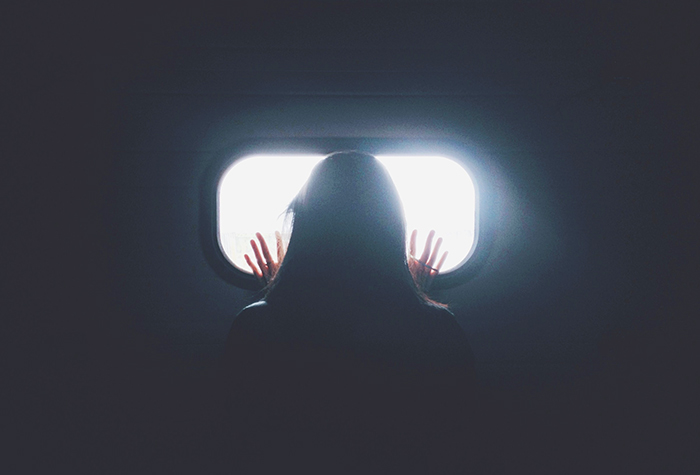
When Hamdan Azhar moved to New York six years ago, he didn’t really have any friends. But New York City’s Ramadan changed that. Every night offered an opportunity to go somewhere. You could go to a lecture. Break the fast with friends. Find a new mosque.
And when one did find an event, Hamdan recalls, it would be packed, bodies in bright clothes filling crowded halls, laughing, gossiping, their faces full of mirth.
By the end of his first Ramadan in New York as an adult, Hamdan had more than a hundred friends.
“It was kind of overwhelming,” he tells me. “I’m a bit of an introvert, so going from being solitary and alone to having more than a hundred friends…” he trails off.
Those, of course, were the before times. Before COVID-19 came to the U.S. and New York. Before someone like Hamdan was told he’d be working from home indefinitely, quarantined in his family home in Long Island, New York.
He remembers that day: March 12, 2020.
In early April, The New York Times published an anthology of illustrations, “17 Artists Capture a Surreal New York From Their Windows.” I remember leafing through them with growing wary, fatigued by the gloomy, dream-like qualities of the sketches. And yet, as I craned my neck to look at my own surreal New York, I felt less alone.
What would it be like to press up against the windows of these artists, gently crack open their frames, and step inside their worlds? Hear their truths?
In the weeks after the pandemic enveloped the U.S., historians began to urge people to grab their pens. “Write it down!” they implored. Keep a record of your daily life. These will be the primary sources of the future. My partner asked me to write him love letters. We can tell our grandchildren they were written during the great Worldwide Pandemic of 2020, he said wryly.
These historians may have a point. Take this journal entry of 15-year-old Violet Harris, recounting her feelings when the 1918 Influenza hit her hometown in Seattle.
It says in to-night’s paper that to-morrow all Seattle will be wearing masks. No one will be allowed on a streetcar without one. Gee! People will look funny — like ghosts.
It’s hard not to feel a sense of kinship with teenage Violet, who pressed articles from the local paper about the latest fashion in masks into her diary. More than a century later, American towns are once again haunted by ghosts, and as she pointed out, we all do look funny. But it’s also a gentle reminder that, as a race, we’ve been here before. Teenage Violet was sent home from school just like thousands of kids today.
“History may often appear to our students as something that happens to other people,” says historian Kevin Levin, who has taught American history to high school and college students for more than 20 years. “But the present moment offers a unique opportunity for them to create their own historical record.”
As we are thrust, tired and bedraggled, into 2021, this past year of lockdowns and sickness may already feel hazy, like a dream you can’t quite recall now that you are awake. Vaccines are making their way down production lines and into coolers like the proud soldiers of a new army, waiting to put this pandemic firmly in the past.
In some ways, the contours of 2020 are already starting to feel like recent history, events that need to be judiciously documented, lest we forget.
In that spirit, I asked strangers, from around the world, to open their diaries for me. To help me create a brief historical record of their time in quarantine. A young Muslim in New York celebrates Ramadan indoors. A New Yorker tries to build a new life in Puerto Rico. An Indian-American woman moves to Mumbai to start a new business, only to watch it flounder. A Filipina maid gets trapped with her abusive employers.
These are stories of grief and loss, of profound confusion, and of everyday mundanities. They are also stories of resilience and reinvention, of a Darwin-like adaptation.
If you were lucky, COVID-19 sent you indoors, safely cloistered within the walls of your home. And yet, for all its isolation, this pandemic launched us into a grand social experiment. We social distance, after all, for ourselves as much as we do for others. Stay indoors, and you allow doctors and nurses and firefighters and conductors to do their work. Stay indoors, and you make others safer.
“There’s a hyper awareness that every action we take could have tremendous consequence,” says Hamdan, reflecting on the pandemic. “God has made it clear to us we are interconnected. I could sneeze and touch a subway pole, and someone I’ve never met gets sick. We are all in this together, there are tremendous links and connections, and it’s not a bunch of atoms and randomness.
“We’ve been forced to ask, ‘What is our relationship with God? And what is our relationship with each other?’”
So we begin.
⬜ ⬜ ⬜ ⬜ ⬜
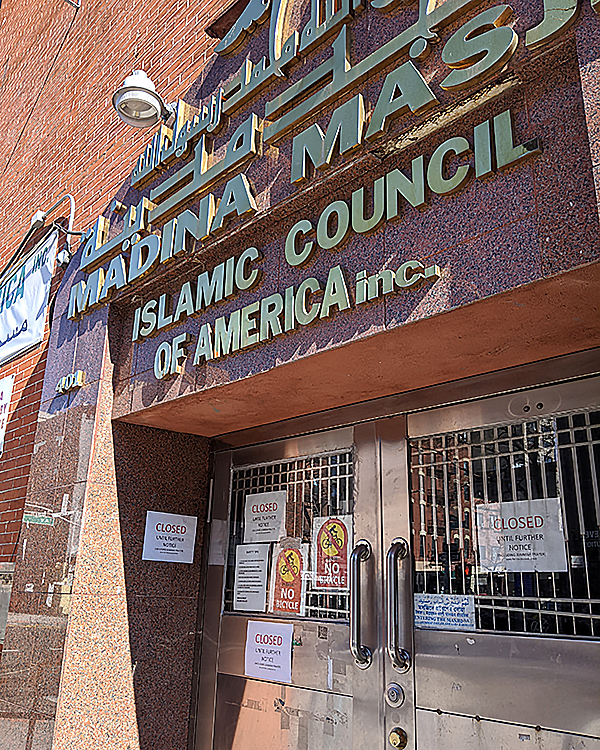
For Hamdan Azhar, the first few weeks of quarantine were challenging. “It kind of felt a little bit like the world was ending almost, we were just waiting for this tsunami of death and destruction to hit us.”
Hamdan lives with his mom, dad, and sister in a suburb in Long Island. He says the first week when everyone was sent home was pretty uncomfortable, but eventually his family found a rhythm. Interact a few times a day, over hastily brewed pots of coffee, and then slink back to your rooms. “When we go to the kitchen, we’d say hi to each other, but it’s kind of like, we’re commuting to our rooms. And then we stay there from 9 am to 7 pm.”
“I took for granted the importance of the visual stimulus of daily life, waking up, getting on the train, stepping out to get coffee,” Hamdan says. “I used to see hundreds of thousands of faces every day. There was a lot of action in the movie of my daily life, and now that movie is mostly the walls of my house.”
Soon, though, Hamdan would be seeing dozens of faces every day, beaming up at him Brady-bunch style, softly lit by circular lights and clip-on fixtures from the world’s most-trafficked location: zoom. In April, New York Muslims tried to recreate the fast-paced, social aspects of Ramadan on the internet. There were lectures, prayer readings, Quran readings, and webinars, Hamdan tells me. Even his own group, the Muslim Writers Collective, organized discussion sessions with young Muslim writers and authors.
But Hamdan says it was a poor substitute for the real thing.
“I was a cyborg, I would strap into the matrix every night, I would strap into this virtual world,” says Hamdan. “Living in New York City, I never had a shortage of real-world communities. The real world was always a big part of my world.”
During the pandemic, days during Ramadan began to look the same. Hamdan would wake up at 9 or 10 a.m., sit down at his computer, and work till the early hours of the afternoon. At that point, he’d start getting a headache.
“I was completely exhausted,” Hamdan says. He’d lie down, foggy-headed, and sleep till 7 p.m., at which point he’d wake up again, and make his way to the kitchen.
At 8 p.m., Hamdan would break his fast. He’d slowly drink his coffee, a ritual that took on an almost spiritual significance, as he savored the brew and felt his life-force, gradually, rushing back. “I sort of felt like I was coming back to life,” he remembers. Then, his family would eat too much, and begin to pray.
Before the pandemic, this breaking of the fast would happen in a bustling mosque, filled with laughter, conversation, and the sounds of children playing. Three hundred people would pray together. The nights were when the community would really come alive. “It’s a vibrant party,” says Hamdan.
Now, instead, with his new-found energy, Hamdan returns to work, and ends up working until 4 am, when he can eat again.
I asked Hamdan if there is anything about Ramadan during a pandemic that’s better than the Ramadan of pre-pandemic times.
“You know, having my bed next to my office, that’s pretty special,” says Hamdan half-jokingly. “I can barely focus until I break the fast, so If I don’t have any meetings after 3 p.m., I sleep. That’s not something I could do back in the day.”
As 1.8 billion Muslims around the world prepared for a Ramadan indoors, some began to reflect on what it could mean to enter the religious month during a pandemic. A few even argued that an austere Ramadan was what the universe was calling for, after years of rowdy parties.
“I believe the authentic spirit of Ramadan is one of self-discipline, introspection, self-discovery and self-development,” writes Heba Shaheed, a Muslim writer and women’s health advocate, in The Guardian. “Ramadan during the global pandemic may seem disheartening at a superficial level, however I honestly feel that it arrives at an ideal time.”
I asked Hamdan if he found meaning in experiencing Ramadan during a pandemic.
“We think we are the masters of our destiny, but we are subject to forces beyond our control, beyond our understanding,” he told me. “Our feeling of confidence and dominance over the world is an illusion. We are just passengers.”
Some 50 miles away in an apartment in Bushwick, Cassandra was coming to similar conclusions. “I’ve always been a push-it-forward, things-happen-for-a-reason, kind of person,” she tells me. “This is the situation, we’re not in control.”
⬜ ⬜ ⬜ ⬜ ⬜
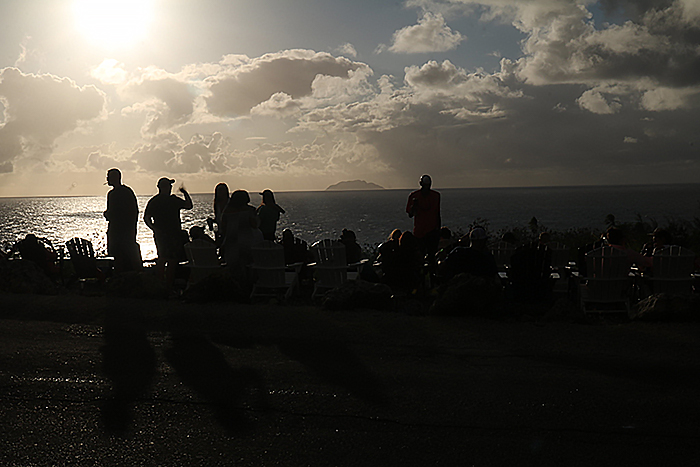
When I first call Cassandra, she’s a little breathless. “Sorry, can I call you back? It’s one those crazy shit-storm quarantine days.”
Later, she’d tell me she was in line waiting to get into Ikea in over 100-degree weather, the sweat from her brow pooling in her mask. “No one even told me I was standing in the wrong line,” she says, a little angry. “This is the worst day. I was at the point of tears.”
Cassandra is calling me from Puerto Rico. “You know, we’re a third-world country. If something happens here, we will not be OK. We don’t have the proper hospitals, so everyone is always wearing these masks.”
A few months earlier, Cassandra was living in a split-level in Brooklyn, miles from the island. She had the kind of life that seemed based less in reality, and more in the world of post-college, New York sitcoms. A life of unexpected meet-cutes, unstructured schedules, and lots of mingling with friends. “I have a very, very good friend-group and we’re like always together. I mean always together,” she says with emphasis.
Cassandra has many jobs. She’s worked in real estate. She has run the accounts for a popular Williamsburg tattoo parlor. She’s a doula, assisting women in childbirth. She’s currently working on an anthology of poems. She’s the kind of person who wakes up to work out at 5 a.m. (“yoga or ballet”), checks her emails, makes a matcha latte, and puts together a healthy breakfast (“usually something whole grain, like granola”). The rest of her day is split between working and impromptu visits to friends.
“Every night, we’ll have family dinner together. Eddie gets the wine. Kevin might provide the weed, I’m going to do all the cooking, Madison is going to clean the dishes, and by the time dinner is done, two or three or four more friends have shown up, totally unplanned, and it turns into a nice dinner party.” Cassandra chalks these mafia-style dinners to her Jewish and Puerto Rican roots. “In both of those cultures, family is everything.”
There’s a way in which Cassandra’s voice gets almost maternal when she talks about her friends — gentler, warmer, reminiscent with pride — which is surprising for someone who is 23. She often interrupts her stories to laugh at herself or one of her friends, aware they sound more like caricatures than people moving through real life. “We call ourselves Titty Titty Gang Gang,” she tells me exuberantly, as she explains how some funny thing that happened at a bar gave the gang its moniker.
In those times, it was hard for Cassandra to imagine how drastically her life would change in the coming weeks. “Shit just hit the fan,” she’d later tell me.
I first started messaging Cassandra two weeks after New York’s governor, Andrew Cuomo, issued stay-at-home orders for the whole state.
Her early messages were desperate, frenetic. She’d lost most of her jobs. She was struggling to file for unemployment. She’d ended things with her live-in boyfriend.
For many people, quarantine brought the cracks in their lives to the surface. As I put out a call for stories, I was surprised by how many resulted in betrothals or breakups, career switches, and periods of intense re-evaluation. For Cassandra, the jobs, the friends, the mob-like family dinners, had kept her distracted. In the absence of all of that, the charmed life she’d built no longer made sense.
In the weeks after ending things with her boyfriend, Cassandra packed her bags and made a decision: she was going to move to Puerto Rico, where her dad lived. When she’d first arrived, the country had stringent curfews. “If you were out after 7 p.m., you could be arrested.”
Life was gloomy and suffocating. She’d wake up to fusty, concrete walls and few windows. It was the height of mosquito season, and she’d watch angrily as the tiny creatures swarmed her room.
Even during COVID-19, she was expected to visit her elders, kiss her grandmother, and pay respects, sometimes multiple times a day. “I felt like shit at times,” she tells me. “I had to accept that I’m less than my best and apologize to someone who I was really shitty to.”
As the days pressed on, she started receding to her room, working on personal projects, withdrawing.
Unlike Hamdan, who missed the mirth and liveliness of Ramadan, Cassandra found herself seeking a different kind of life. The woman who once led warm, boozy dinners with a bevy of unexpected guests, now, mostly, wanted to be left alone.
I ask her if she thinks she might be depressed. “I’m not so sure,” she responds pensively.
Some part of Cassandra, subconsciously, was looking to rebuild her life — to make it something entirely different.
And in the coming months, she’d do just that.
⬜ ⬜ ⬜ ⬜ ⬜
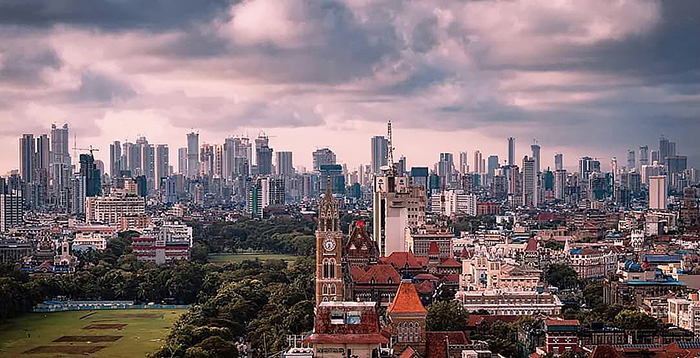
Unlike Cassandra, Niki Aggarwal had packed her bags and disrupted her life months before COVID-19 came to the U.S. Niki is American, but grew up in Vienna, and as her teenage years waned, she itched for India. “I always wanted to know how Indian I was or wasn’t,” she says. “I didn’t feel Indian at all because I was an Indian American who grew up in Europe. I just wanted to live in a place where people looked like me, where I was supposedly from.”
This itch is something I can understand. I was born in the U.S. but raised in Singapore, to parents who grew up in South India. In some ways, I am a global citizen, but also a citizen of nowhere — not as Indian as my Chennai-raised cousins; American, but lacking the coming-of-age context; and not quite Singaporean, either. I have the classic, twangy accent of an American.
When I arrived in New York, I found that I didn’t feel as American as my peers (never mind that really, what I should have been interrogating was not how American I was, but how we define “American” at all.)
These feelings of displacement came into sharp relief for Niki on a family trip to Delhi, her father’s hometown. There, Niki visited the India Gate, an imposing, sandstone arch astride the Rajpath, at the heart of New Delhi. Inscribed on its surface were 13,000 names of British Indian soldiers who lost their lives in the First World War.
As a young girl, Niki mulled over the landmark’s inscription, feeling baffled by the limitations of her own knowledge. “I never knew the Indians were a part of that,” she tells me with feeling. “I grew up in Austria, where you learn about World War I and World War II from the beginning, but no one ever told me that.”
Niki shares her backstory from a comfortable apartment in the Bandra West, a neighborhood that’s home to Bollywood stars, expats, trendy bars, and restaurants. (The suburb even sports a comedy club, The Cuckoo, where Indian-American comedian and former Parks and Recreation star Aziz Ansari stopped on his India tour.)
It reminds her of her hometown in Vienna, with its sinuous, winding roads and cobblestone pathways, a relic of colonization by the Portuguese. “It feels like such a small town,” she says warmly. And yet, this small town is part of the Mumbai metropolis, home to more than 18 million people.
Niki moved to Mumbai in the late summer of 2019, after quitting her job in Silicon Valley. She was chasing a dream, creating audio tours for monuments and historical sites in India, like the India Gate. She arrived as the monsoons were overtaking Mumbai, heavy clouds thundering above, in a fashion that almost begged for symbolic interpretation. She didn’t speak the language or know where to buy groceries, and learned these skills drenched while facing the hot, humid air.
“I wanted to see all the beauty of the city,” she reminisces. Instead, she was trying to buy fruit in the middle of a deluge.
By February of 2020, the rains were behind her and she was settling in. She’d bought a colorful, rainbow rug for her living room. Her business was gaining traction. She ran a two-hour tour in Jaipur with some 50-odd people that was a success. “It was Mythbusters, Jaipur edition,” she tells me, saying she focused on the decolonized, not white-washed, South Asian-centered version of the place’s history.
March 14 was the last day she remembers leaving her apartment for some time. “I was kind of a corona hipster,” Niki tells me. In the days ahead of lockdown, she’d been nervously declining social invites, feeling impending doom. And then, her trusted helper, Ankita, could no longer come to clean. “It’s no joke in Mumbai, it gets so dirty so quickly,” she tells me. She didn’t have a mop, and her floors became thick with dust.
“The first four weeks were really hard,” Niki confides. “I was scared of everything, so I didn’t leave my apartment for 10 days.” Her neighbor had tested positive and her apartment complex was put on lockdown. Niki sat at home, continuously reading the news in a growing cycle of despair. “All I did was read the news and sleep and eat.”
The police presence in Bandra West was also on the rise. Niki would look out her window and see eerily empty, silent streets, save for officers on patrol. It was unnerving, especially since she’d gotten used to the loud, uniform cacophony of the city. “I just felt so helpless,” she tells me, thinking of the sprawling slums just miles away from her flat.
By July, more than half the residents of Mumbai’s slums had tested positive for coronavirus. The New York Times reported that in Dharavi, Mumbai’s largest slum, health workers were shimmying down narrow alleyways, marking the infected with large stamps. That world of exploding infections seemed far away from Niki’s apartment in an affluent neighborhood, where she couldn’t even hear the ring of sirens. “Every day I wake up and I’m extremely safe,” she tells me. “I don’t have to be out in the world right now.”
At this point in the conversation, I’m hesitant to bring up her nascent business, which had just begun to stretch its legs and walk around.
“Oh that, it’s an evolving process, like the stages of grief,” she says slowly. “First, I ignored it. Then I kept telling myself, this is just going to be a few months, keep building your business. And then I started to bargain with myself, just keep going till the end of the year. And finally, I realized, I can keep building this thing but no one is going to want it for a long time.”
She lets out a sigh.
Niki tells me that in the worst moments of the pandemic, locked away in her apartment, she began to question it all. Should I have even moved? Why did she come all the way to India, only to watch her dream fail?
“I’m sad and disappointed,” she says. “This had been my vision for the last two to three years and I knew with 99 percent certainty it would fail.” Niki is of the tech world; she knows how this works. But she wanted to know that if this thing she loved failed, it would be because of her choices. “Now if it fails, I won’t know if it could have never worked, or if it was just the pandemic.”
This feeling of economic precariousness is not unique to Niki. Millions of small business owners the world over have watched their restaurants, bars, gyms, and boutiques falter, with thinning crowds and mounting bills.
“I was interested in changing the narrative of South Asia and creating local jobs at the same time,” Niki tells me earnestly. “This has really forced me to reconnect with my actual mission and goals. When I strip away the parts of my ego attached to growing an impressive startup, what is it I actually want to achieve?”
Niki began to enter a period of intense introspection. She set about reinvesting in her personal life, focusing on things that brought her joy. There were late night video calls. Trivia nights. Virtual gatherings. Even working out. “I almost want to tell my high school PE teachers that I now work out regularly. They’d probably be in disbelief.”
Slowly, over time, she redirected her energy and research into a different dream: a podcast that shares stories of a revisionist, South Asian history.
Niki is self-conscious of this transformation, wondering if her self-described metamorphosis seems a little cheesy to others. I hold back the urge to interject, to tell her that cheesy or not, she doesn’t seem to be alone.
As I’m talking to Niki, Cassandra, in Puerto Rico, is fixing up a new home in the mountains, far away from the city and even farther from her noisy, overcrowded split-level in Brooklyn.
“There are 10 cows outside my window right now.”
The whole thing happened rather quickly, she tells me, a little out of breath. Her Dad was visiting some friends and dragged her out of the house. “I really, really needed it, and later, thanked him.” They drove out to the countryside and over dinner, one of his friends mentioned there was a place that was up for sale not too far away.
“I literally just stumbled across it, through word of mouth.”
For the foreseeable future, Cassandra’s life will include floor restorations, home makeovers, and time spent gazing at cows. In a way, Cassandra has re-invented her life, quite literally, from scratch.
It’s a sentiment Niki can understand as she’s mulling over her new life and waiting, with some trepidation, for Mumbai’s monsoons to return, remembering with humor how she’d first arrived among downpours more than a year ago.
“I’m not sure how we will make it, but we will.”
⬜ ⬜ ⬜ ⬜ ⬜
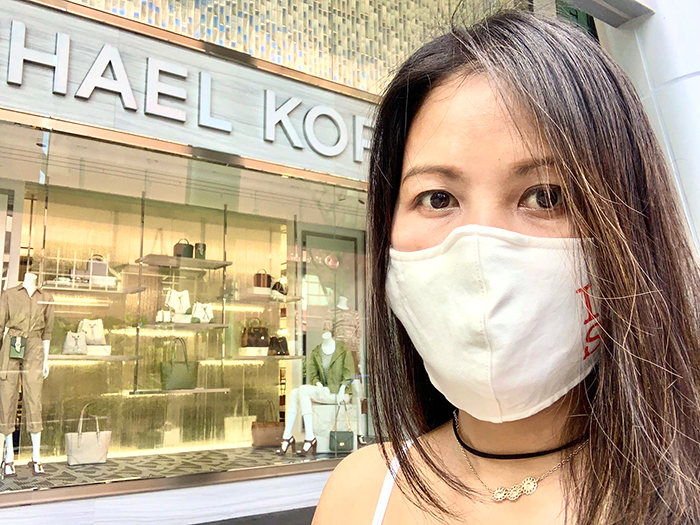
Chona Valdez understands the beauty and power of a new home. In late December of 2019, the 46-year-old mother of three bought her first home.
“It’s for my kids,” she tells me warmly. “My eldest daughter said, ‘Mama, you don’t need to go back to work, we should be buying our own houses.’ But I wanted to do this for my kids.”
Now, far away in Singapore, Chona loves to conjure up the house in her memories, turning it over and delighting in its rooms, entrance, and modest garden. “It’s very simple,” she tells me. “Four rooms, so each of us has a room.” Her home is in Quezon City, Philippines, a metropolis on the Guadalupe Plateau, northeast of the capital city of Manila.
A life in Quezon City is at least two years away. Chona is a migrant worker in Singapore, working as a live-in maid, or as the locals say, a helper. It’s a choice many Asian women from low-income families make. “It’s been very difficult, because I need to sacrifice so much,” she tells me. “In the Philippines, it’s hard to find a stable job.” In Singapore, someone like Chona can make three or even four times what she would make back home.
So that’s exactly what Chona has been doing for 16 years. When I ask her if she remembers her first job, her voice gets a little strained. “I was 30 back then,” she says wistfully. Her children were barely teenagers.
The day I call Chona up, she’s received yet another message from the Singaporean government, an update on the spread of COVID-19 in the country. Her whatsapp is regularly flooded with alerts from the government and frantic messages from friends. “I miss you,” say many. Others are just a string of distraught emojis.
Chona has two free days every month. In the before times, she’d use them judiciously, starting her morning by shedding her worn-out workwear for form-fitting booty-shorts, a plunging top, and a pair of neon-colored heels. She methodically layers on foundation, concealer, highlighter, lip gloss, and falsies, and then takes a few selfies for family back home.
Chona then meets up with a gaggle of other helpers, all donned in similarly svelte outfits, ready to eat, sing, and dance. They shuffle into Lucky Plaza, an emporium that’s home to a local Filipino eatery. Chona orders a generous assortment of fried foods and adobo, her favorite dish. The women gossip and eat with mirth, and later head to a local pub, where they karaoke.
It’s hard to emphasize how important these 48 hours are for Chona — they’re the bright spot among many days of tedium that blend together. It’s in these 48 hours that Chona carefully concocts an alternate, glamorous life, a life that makes her friends back home jealous and her family, usually saddened by her absence, temporarily relieved.
As Chona is talking to me at the start of summer 2020, those days are behind her. Singapore has been in lockdown since mid April. “They announce, ‘you cannot go out, you cannot do this,’” she remarks sadly. “I need to focus on my work to not feel the depression. But I also need to have patience with this family.”
The family she is referring to are her current bosses, a couple, a set of grandparents, and two young children. Chona plays with the youngest child, a 1-year-old, acting as a surrogate mother. As we keep talking, Chona’s work situation becomes a little clearer. “Honestly, no, I don’t like my job,” she says carefully, as she reveals what her day-to-day life looks like.
The grandmother frequently screams at her, throwing verbal assaults her way. The parents are cold and indifferent to this abuse, often joining in themselves. They don’t let her use her phone after 7 p.m. At times, she scurries away to the bathroom, feigning the need to pee, to secretly check her messages. On some days, Chona feels so suffocated, she retreats to her room and stays there for hours, until an angry knock beckons her to work again.
“I cannot stand them,” she says, defeated. “But I also don’t have a choice, I had to take this job.”
Not long before, Chona was in much better circumstances, working for a Chinese family from Shanghai who treated her well, generously, even. But in late 2019, they relocated to China. She tells me they begged her to move with them, but she wanted to be close to the Philippines.
Before the pandemic hit, someone like Chona, with 16 years of experience, would have been in great demand. So she took her six months of severance and went back home to spend time with family. That’s when she bought her new home.
“I wasn’t worried about getting a job, I knew when I was ready, I could return to work.”
In January, Chona made her way to Malaysia, idly looking for work. But even then, rumors of a virus from China were starting to spread. She heard about people getting sick in Asia, and started to feel a panic set in. “What if I’m still in Malaysia, and they announce a lockdown,” she thought desperately. “What will happen to me?”
She signed with the first family that would hire her. Even in the months before COVID-19 came to Singapore, Chona found herself becoming withdrawn, battling the first signs of depression as they descended on her mind like a sticky, hot glaze. She’d use her days-off to go to church, see friends, eat, dance, and get away, and for a time, it worked.
But once Singapore entered quarantine, things became much worse.
“The depression was also like, how are my kids? How are they doing? Are they safe?” she says thickly. She began to worry about her own health too. Her bosses were still taking their kids out to play. The grandfather would regularly cough and wheeze, saying he couldn’t breathe. It made Chona nervous. Her owners didn’t seem fazed by the virus.
There’s an unspoken understanding between me and Chona: seeking mental health support is likely out of the question. As time passed, she began to look for other ways to mend, and to her surprise, she found herself reminiscing over the people she’d hurt, the friendships she’d let die. She called an old friend whom she’d had a fight with back in the day and apologized. She sent some money to relatives she hadn’t spoken to in years. “Fixing things, it made me happy,” she says quietly.
And yet, most days, Chona knows what she needs to do to get through this time. “If I have something to eat, I can survive,” she deadpans. “When I talk to my friends, we repeat to each other, ‘we can survive, we can survive, we can survive.’” And then the girls conjure up memories of the last time they went out, hitting the clubs at Clarke Quay, dancing, drinking bad wine, and she feels better.
⬜ ⬜ ⬜ ⬜ ⬜
It’s probably worth confessing that I pursued this project for selfish reasons. A few months into the pandemic, I became severely depressed. It lay on me thick, like a milky fog, encasing my mind.
At first, our new normal felt bracing, like a challenge to face with vigor. But soon, I was moving through the motions of my day robotically, brushing my teeth, washing my face, mustering up the energy to work, only to collapse, exhausted, in my bed. This malaise was occasionally disturbed by moments of panic and anxiety, but the fog was ever present, and just as quickly, they were obscured.
It was horrible, and also infuriating, because I’d read the headlines and absorb the savagery of this disease and I knew that I was lucky. My therapist would point out gently, that’s not how anxiety and depression work. “How does it work?” I thought angrily. How do we adapt to this?
I’ve been thinking lately of the The 100, a sci-fi drama set in a post-apocalyptic world, whose characters descend beneath the ground because the air on Earth has become poisonous. They spend six years in a bunker, away from the sun and skies. They’re a resilient bunch (they have fought off four seasons of disasters), and yet, their chief terror, despite food and water shortages, is their own thoughts: demons flitting around like anxious birds in their minds, gently cooing, this isn’t worth it. Maybe you want to die.
I contemplated their torments from the privacy of my own bunker, which wasn’t even really a bunker, but a comfortable, cozy hovel in Brooklyn. And yet, at times, I felt like I too had descended somewhere foreign and unreal. Thrust into an alternate dimension, absent of crowds, commutes, flooded bars, hugs, kisses, open, public laughter. Away from human touch, from the accidental elbow of a stranger or the tight embrace of a friend. I too was afraid of the air around me.
I am struggling, I thought. But I’m probably not alone.
I pitched this story so I could talk to strangers. What I found, at least from the folks I talked to, is that people are far more stubbornly resilient than I’d realized. But sometimes, for that stubborn resilience to rear its head, takes time. I watched as people languished for months. And then one day, seemingly out of nowhere, realized something profound. I want to be alone. I want to do something different. I miss my home.
As we plunge into 2021, I’m hearing the same sentiment over and over: let this be a better year. Let us forget. Let us move on. And yet, I’m terrified of forgetting. Forgetting what transpired, what we went through, what we learned. The ways we morphed, small or big, in this timeless limbo. As the clock turns on this new year, I find myself desperately journaling about the old. I hope these stories can serve as a reminder, like a message in a bottle, that when we need it most, washes ashore.
I’ve learned that resilience can even bloom when there’s nothing to be done.
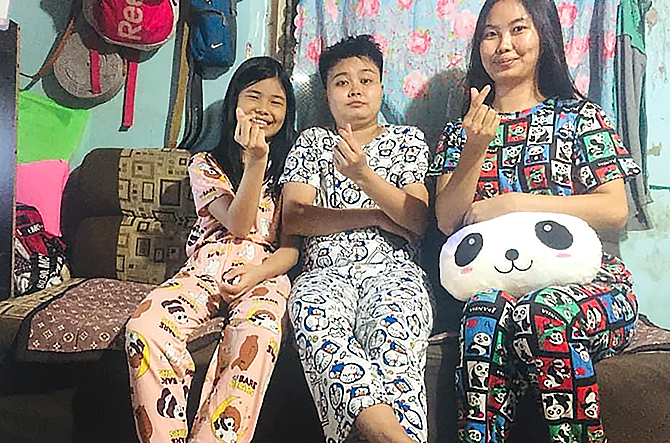
As I write this, Chona’s home lies in a temporary lake. Her concrete floors are covered in several inches of grimy water and her family’s possessions bob ominously. She sends me pictures and I feel my throat close, knowing how hard this must be for her. Her home was in the flight path of Tropical Storm Saudel, which flooded many towns in the Philippines.
Chona initially panicked, but she tells me her kids are strong. “They are the ones that lifted me up and said not to worry.”
For now, Chona is finding solace in the land of imagination and fantasy. It’s a different kind of resilience, a different form of adaptation.
“Two years from now, I’m going to go back to my home,” she tells me. “I’m going to open a restaurant and cook everything.” She dreams of serving adobo, spiced dumplings, and many sweet things. And when the day is over, she’ll sleep soundly, surrounded by her daughters, in her home.
As I recall Chona’s toothy smile and gentle eyes, I can’t help but be drawn in by the strength of her dream.
